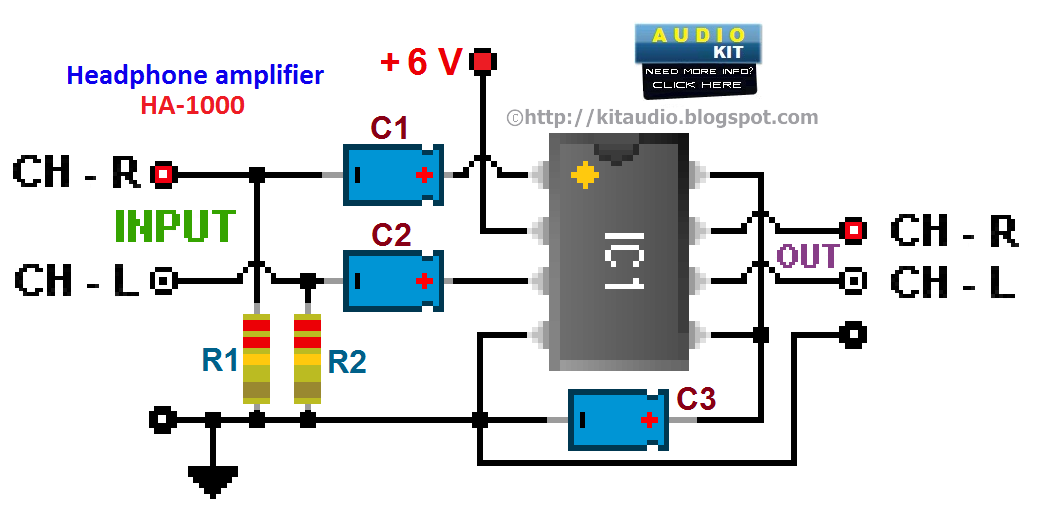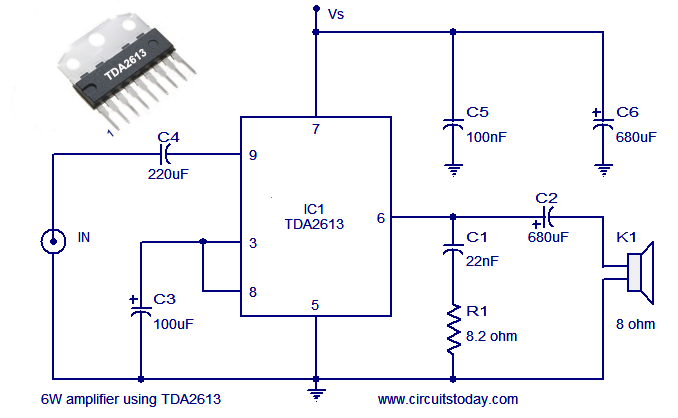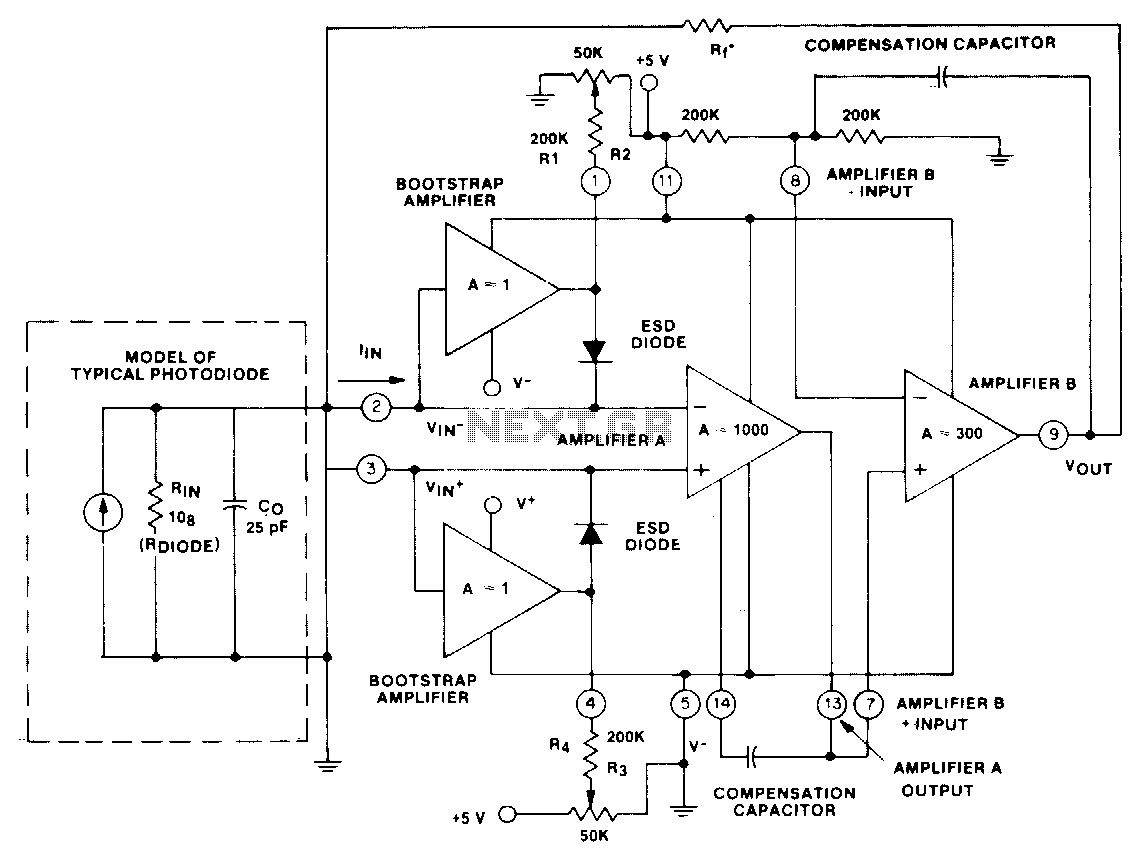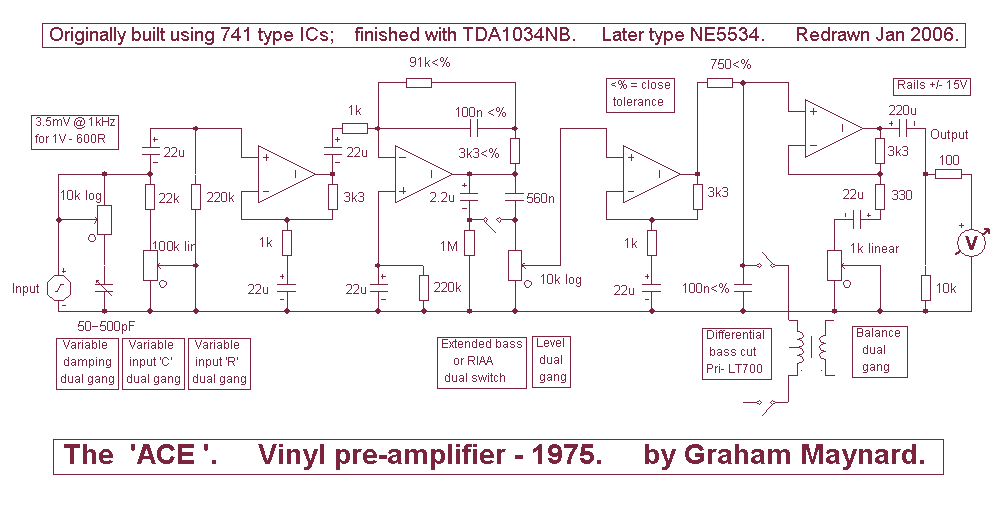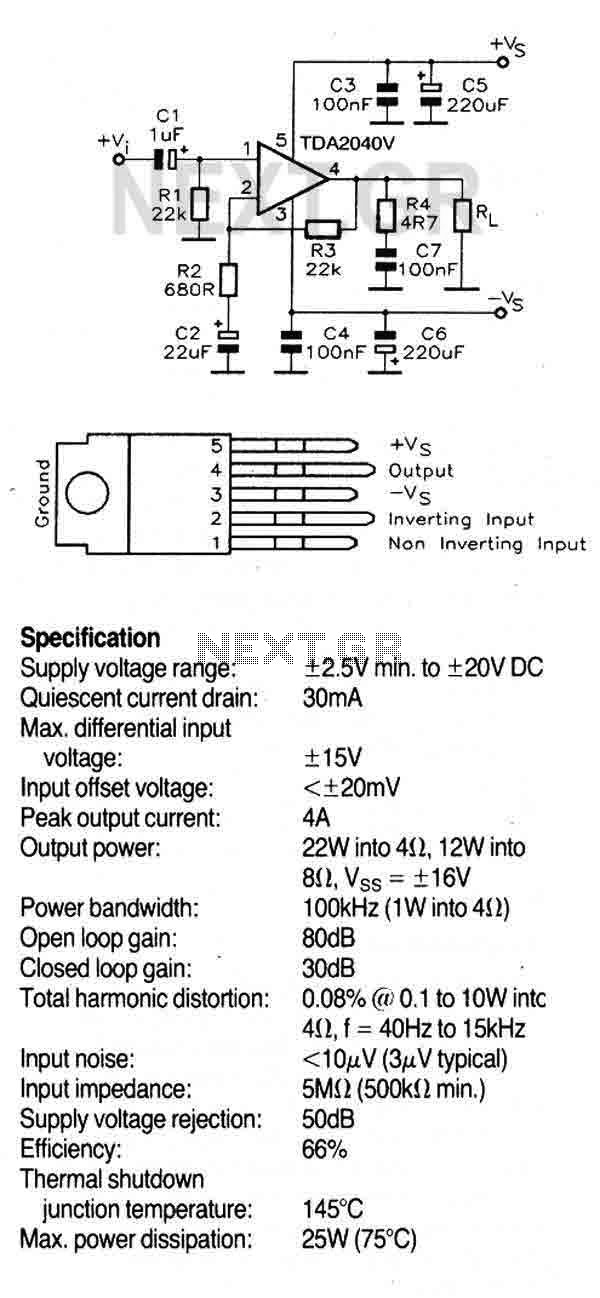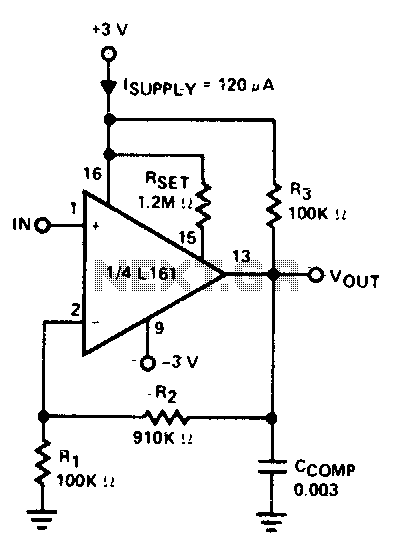
balanced amp

Signals always involve at least two paths to complete a circuit. For instance, when electrons travel down the center lead of a guitar cable, an equivalent number return on the shield. The shaft of the plug connects to ground at the amplifier jack, leading to the perception that its voltage is always zero. In contrast, the voltage at the tip of the plug varies with the signal. This conceptualization is sufficient for most amplifier applications. When the voltage at the grid of a 12AX7 triode increases relative to ground, it can be stated that ground decreases in voltage relative to the grid. The distinction between these statements arises from the significant physical differences between the two reference points: one being a small pin at the base of the tube socket and the other being a large steel chassis connected to a multi-ampere distribution system that leads to an electrical service panel bonded to a copper rod driven deep into the earth. Thus, the planet Earth effectively connects various amplifiers across locations. The send and return paths for the signal, represented by the tube pin and the chassis, differ physically and electrically, with varying impedances and unsymmetrical circuitry. This type of signal transmission is termed "unbalanced." A simple triode preamp and a single-ended power amplifier are examples of unbalanced circuits. Conversely, in a symmetrical circuit, such as a pair of power pentodes in push-pull configuration, both phases are driven by equivalent impedances, resulting in a "balanced" circuit. The power tube grids fluctuate with respect to ground in an equal and opposite manner, with the signal represented as a voltage difference between identically configured circuits. Balance offers advantages, such as the cancellation of AC ripple in the power supply, which affects both signal phases equally, maintaining the voltage difference. In guitar amplifiers, this has significant harmonic implications. Single-ended amplifiers remain unbalanced throughout the signal path, leading to variations in the amplification factor and the production of second harmonic distortion. Traditional push-pull amplifiers maintain an unbalanced state through preamp stages but transition to balanced mode in the power stage, resulting in equal distortion for both positive and negative swings, which tends to cancel even harmonics and generate odd harmonics. This balance yields notably different tonal characteristics. In a push-pull amplifier, the transition from unbalanced to balanced signal paths is achieved through a phase inverter, which converts an unbalanced signal into two balanced signal paths of opposite phase. By positioning the phase inverter at the guitar input jack, the unbalanced guitar signal is transformed into a balanced amplifier signal, allowing balance to be preserved throughout the signal chain. The example circuit utilizes an EL84 power amplifier where the screens operate at lower voltages than typically seen in push-pull guitar amplifiers. The plate and screen dissipations are well within limits, and an 8k plate-to-plate output transformer is employed, akin to a traditional Class AB amplifier, despite this design being biased for pure Class A operation. In a high-power, high-fidelity context, a reduction in impedance to 4k would be advisable. The difference between cutoff and saturation is approximately 12 volts, and the DC operating conditions are maintained accordingly.
In electronic circuits, signal transmission can be categorized into unbalanced and balanced configurations. Unbalanced circuits, such as those found in simple triode preamps or single-ended amplifiers, utilize a single signal path with a common ground reference. This configuration is straightforward but susceptible to noise and interference, particularly over longer cable runs. The electrical characteristics of unbalanced circuits can lead to distortion, especially in the presence of varying signal amplitudes, as seen in the case of guitar amplifiers, where second harmonic distortion is prevalent.
Balanced circuits, on the other hand, employ two signal paths that are driven in opposite phases. This configuration is advantageous for minimizing noise and interference, as any external noise that couples into the signal paths affects both phases equally and can be canceled out at the output. The use of a phase inverter, which creates two balanced signals from an unbalanced source, is crucial in maintaining signal integrity throughout the amplification process.
In the context of a low-power amplifier design using an EL84 power tube, careful consideration of the output transformer impedance and operating conditions is essential. The choice of an 8k plate-to-plate output transformer allows for efficient operation in Class A mode while ensuring that the components remain within their specified limits. The design aims to achieve a balance between tonal quality and operational efficiency, with the potential for rich harmonic content derived from the interplay of balanced and unbalanced stages in the amplifier. The unique characteristics of this configuration can produce a distinctive sound that is both warm and dynamic, appealing to a wide range of musical styles.Signals always involve at least two paths to complete a circuit. Send some electrons down the center lead of a guitar cable, for example, and you get an equivalent number back on the shield. Because the shaft of the plug is connected to ground at the amplifier jack, we tend to think of its voltage as always zero.
The voltage at the tip of the plug , on the other hand, varies with the signal. This conceptual understanding works fine in most amplifier work. When the voltage at the grid of a 12AX7 triode rises relative to ground we can say with equal authority that ground drops in voltage relative to the grid. The fact that one statement seems scientifically reasonable and the other a sign of imminent psychosis is because of the substantial physical differences between the two reference points.
One is just a tiny pin at the base of the tube socket. The other is a massive steel chassis connected by the power cable to a kilometer of big green wires in the wall. The building`s multi-ampere distribution system connects the power cable to an electrical service panel bonded to a big copper rod that is thrust deep into the earth.
So in effect our planet earth connects your chassis to my test bench, a Vox AC30 warming up in Tokyo, and thousands of other working amps. The send and return path for the signal, in this case the tube pin and the chassis, are physically and electrically different.
The impedances driving them are different. The circuitry connected to them is unsymmetrical. We call this type of signal transmission "unbalanced. " A simple triode preamp is unbalanced. So is a single-ended power amp. When the circuit is symmetrical, like for a pair of power pentodes in push-pull, and when both phases are driven by equivalent impedances, then the circuit is said to be "balanced. " The power tube grids vary with respect to ground in an equal and opposite way. The signal is represented by a difference in voltage between identically configured, mirror-image circuits.
Balance has its advantages. For example, AC ripple in the power supply tends to change the voltage of both signal phases in the same direction. Both phases either increase or decrease together, and since the voltage difference between the phases remains the same, the effects cancel.
For guitar amps there are important harmonic implications. Single-ended amplifiers remain unbalanced through the entire signal path from the guitar to the output transformer. In each stage the amplification factor varies as the signal swings positive and negative, producing second harmonic distortion.
Traditional push-pull amplifiers remain unbalanced through the preamp stages but shift into balanced-mode at the power stage, where equal distortion occurs for positive and negative swings. This tends to cancel even harmonics and create odd harmonics. Balance produces substantially different tonal characteristics. In a push-pull amp, the transition from an unbalanced to a balanced signal path is facilitated by the phase inverter.
It takes an unbalanced signal referenced to ground and creates two balanced signal paths of opposite phase. By moving the phase inverter all the way forward to the guitar input jack, we transform the unbalanced guitar signal into a balanced amplifier signal and create an opportunity to preserve balance through the remainder of the signal chain.
Let`s see how this would work in a low-power design. For my low-power example circuit the EL84 power amp screens are operating at lower voltages than typically seen in a push-pull guitar amp and the plate and screen dissipations are well below their limits. I`m using an 8k plate-to-plate output transformer like a traditional Class AB amp, even though this design is biased to operate in pure Class A mode.
In a high-power, high-fidelity world that would call for reducing the impedance to 4k. The difference between cutoff and saturation is about 12 volts and the DC operati 🔗 External reference
In electronic circuits, signal transmission can be categorized into unbalanced and balanced configurations. Unbalanced circuits, such as those found in simple triode preamps or single-ended amplifiers, utilize a single signal path with a common ground reference. This configuration is straightforward but susceptible to noise and interference, particularly over longer cable runs. The electrical characteristics of unbalanced circuits can lead to distortion, especially in the presence of varying signal amplitudes, as seen in the case of guitar amplifiers, where second harmonic distortion is prevalent.
Balanced circuits, on the other hand, employ two signal paths that are driven in opposite phases. This configuration is advantageous for minimizing noise and interference, as any external noise that couples into the signal paths affects both phases equally and can be canceled out at the output. The use of a phase inverter, which creates two balanced signals from an unbalanced source, is crucial in maintaining signal integrity throughout the amplification process.
In the context of a low-power amplifier design using an EL84 power tube, careful consideration of the output transformer impedance and operating conditions is essential. The choice of an 8k plate-to-plate output transformer allows for efficient operation in Class A mode while ensuring that the components remain within their specified limits. The design aims to achieve a balance between tonal quality and operational efficiency, with the potential for rich harmonic content derived from the interplay of balanced and unbalanced stages in the amplifier. The unique characteristics of this configuration can produce a distinctive sound that is both warm and dynamic, appealing to a wide range of musical styles.Signals always involve at least two paths to complete a circuit. Send some electrons down the center lead of a guitar cable, for example, and you get an equivalent number back on the shield. Because the shaft of the plug is connected to ground at the amplifier jack, we tend to think of its voltage as always zero.
The voltage at the tip of the plug , on the other hand, varies with the signal. This conceptual understanding works fine in most amplifier work. When the voltage at the grid of a 12AX7 triode rises relative to ground we can say with equal authority that ground drops in voltage relative to the grid. The fact that one statement seems scientifically reasonable and the other a sign of imminent psychosis is because of the substantial physical differences between the two reference points.
One is just a tiny pin at the base of the tube socket. The other is a massive steel chassis connected by the power cable to a kilometer of big green wires in the wall. The building`s multi-ampere distribution system connects the power cable to an electrical service panel bonded to a big copper rod that is thrust deep into the earth.
So in effect our planet earth connects your chassis to my test bench, a Vox AC30 warming up in Tokyo, and thousands of other working amps. The send and return path for the signal, in this case the tube pin and the chassis, are physically and electrically different.
The impedances driving them are different. The circuitry connected to them is unsymmetrical. We call this type of signal transmission "unbalanced. " A simple triode preamp is unbalanced. So is a single-ended power amp. When the circuit is symmetrical, like for a pair of power pentodes in push-pull, and when both phases are driven by equivalent impedances, then the circuit is said to be "balanced. " The power tube grids vary with respect to ground in an equal and opposite way. The signal is represented by a difference in voltage between identically configured, mirror-image circuits.
Balance has its advantages. For example, AC ripple in the power supply tends to change the voltage of both signal phases in the same direction. Both phases either increase or decrease together, and since the voltage difference between the phases remains the same, the effects cancel.
For guitar amps there are important harmonic implications. Single-ended amplifiers remain unbalanced through the entire signal path from the guitar to the output transformer. In each stage the amplification factor varies as the signal swings positive and negative, producing second harmonic distortion.
Traditional push-pull amplifiers remain unbalanced through the preamp stages but shift into balanced-mode at the power stage, where equal distortion occurs for positive and negative swings. This tends to cancel even harmonics and create odd harmonics. Balance produces substantially different tonal characteristics. In a push-pull amp, the transition from an unbalanced to a balanced signal path is facilitated by the phase inverter.
It takes an unbalanced signal referenced to ground and creates two balanced signal paths of opposite phase. By moving the phase inverter all the way forward to the guitar input jack, we transform the unbalanced guitar signal into a balanced amplifier signal and create an opportunity to preserve balance through the remainder of the signal chain.
Let`s see how this would work in a low-power design. For my low-power example circuit the EL84 power amp screens are operating at lower voltages than typically seen in a push-pull guitar amp and the plate and screen dissipations are well below their limits. I`m using an 8k plate-to-plate output transformer like a traditional Class AB amp, even though this design is biased to operate in pure Class A mode.
In a high-power, high-fidelity world that would call for reducing the impedance to 4k. The difference between cutoff and saturation is about 12 volts and the DC operati 🔗 External reference
